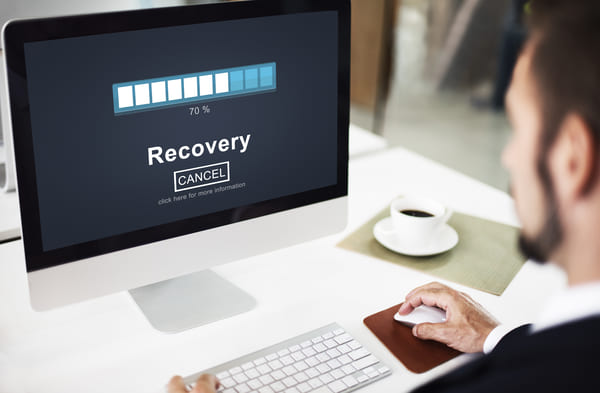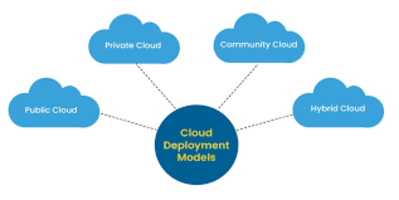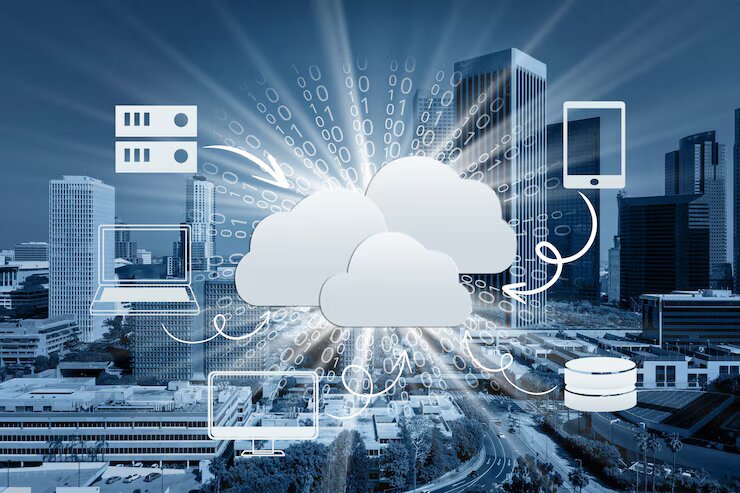Unexpected disruptions can happen anytime, making disaster recovery planning essential for businesses. A strong disaster recovery plan (DRP) helps keep your data and operations safe when things go wrong. Studies show that 93% of companies without a DRP that suffer a major data loss close their business within a year. But having the right plan can help you bounce back quickly and minimize the impact.
There are different types of DRPs depending on your business setup. Each plan has a unique approach to keeping your data and systems safe. In this guide, we’ll explore types of disaster recovery plans: Data Center Disaster Recovery and Cloud Disaster Recovery.
1. Data Center Disaster Recovery Plan
A data center disaster recovery plan is designed to protect physical data centers and servers from disruptions like power outages, hardware failures, or natural disasters. It ensures your business can continue operating even if the primary data center is affected.
Definition and Purpose:
- This plan focuses on safeguarding all hardware, networks, and data stored in physical locations.
- The goal is to minimize downtime and data loss by having a structured plan in place for emergencies.
How It Works:
The plan includes specific steps to recover data and restart systems in a secure offsite location if the main data center is compromised. This helps ensure that your critical operations can resume without significant delays.
Key Elements:
- Backup Power Solutions: Having generators or battery backups to keep systems running during power outages.
- Physical Security: Implementing security measures like surveillance cameras and restricted access to protect servers.
- Offsite Storage: Keeping copies of data in another location if the main center becomes inaccessible.
2. Cloud Disaster Recovery Plan
A cloud disaster recovery plan uses cloud-based solutions to back up and recover data. This plan is ideal for businesses looking for flexibility and lower hardware costs.
Also Read – Cloud disaster recovery solutions
How Cloud-Based Disaster Recovery Works:
- The plan involves storing data and applications on virtual servers hosted by a cloud provider.
- These cloud-based backups are used to quickly restore operations from any location in case of a disruption.
Advantages of Cloud Solutions:
- Scalability: You can easily adjust storage and processing capacity as your business grows.
- Reduced Hardware Dependency: There’s no need for expensive physical equipment, making it more cost-effective.
- Quick Recovery: Cloud servers can be restored faster, reducing downtime significantly.
Key Elements:
- Cloud Backups: Regular backups of your data and applications stored securely on cloud servers.
- Virtual Machines (VMs): These can replicate your business environment and be quickly activated.
- Data Encryption: Ensures data is safely stored and transferred, protecting it from unauthorized access.
A cloud disaster recovery plan offers a flexible, affordable solution that ensures your business can recover quickly from any disruption. This type of plan is perfect for companies that rely heavily on digital operations and need a fast, reliable way to bounce back.
3. Virtualized Disaster Recovery Plan
A virtualized disaster recovery plan focuses on safeguarding business operations using virtual environments. Unlike traditional setups that rely on physical servers, virtualized disaster recovery uses software to create virtual machines (VMs) that act as independent servers. This approach allows businesses to recover data and applications more quickly.
Benefits of Virtualized Environments:
- Faster Recovery: Virtual machines can be restored faster than physical servers, reducing downtime.
- Reduced Cost: Virtual setups don’t require additional hardware, which lowers costs.
- Simplified Management: Managing multiple virtual servers is easier than handling separate physical machines.
How Virtual Machine Snapshots Work:
Virtual machine snapshots are copies of your virtual environment at a specific time. These snapshots capture the state of your system, making it easier to restore data and applications if something goes wrong. If a disaster occurs, you can use these snapshots to roll back to a stable version, quickly bringing your systems back online. This type of disaster recovery is ideal for businesses looking for speed, flexibility, and cost-effectiveness.
4. Network Disaster Recovery Plan
A network disaster recovery plan focuses on keeping your network infrastructure and communication systems running during and after a disaster. This plan is essential because disruptions to your network can impact all other business operations.
Key Focus Areas:
- Network Redundancy: Having backup network connections ensures that the backup can take over if one line goes down.
- Failover Systems: Automatically switch traffic to a backup network if the primary one fails, minimizing downtime.
- Firewalls and Security: Protect your network against external threats, even during recovery.
Tools and Strategies:
- Load Balancers: Distribute traffic evenly across multiple servers to prevent overload.
- VPNs (Virtual Private Networks): Allow secure remote access to the network, keeping communication open even if local systems are down.
- Network Monitoring Tools: Monitor network performance and detect issues quickly.
A solid network disaster recovery plan ensures that communication lines remain open and data flow smoothly. This type of plan is critical for businesses that rely heavily on uninterrupted communication, like customer service centers or companies with remote teams.
5. Disaster Recovery as a Service (DRaaS)
Disaster Recovery as a Service (DRaaS) is a cloud-based solution where a third-party provider manages your disaster recovery processes. This service is ideal for businesses that don’t have the time or resources to build and maintain their disaster recovery infrastructure. With DRaaS, your data and applications are stored and protected offsite by a provider who specializes in disaster recovery.
Benefits of Using DRaaS:
- Cost Savings: No need for additional hardware or dedicated staff.
- Expert Management: Providers handle everything from backups to recovery, ensuring quick and effective restoration.
- Scalability: Easily adjust resources as your business grows.
Who Can Benefit?
DRaaS is perfect for small and medium-sized businesses that want reliable recovery solutions without the complexity of managing them in-house. Industries like healthcare, finance, and retail, which have strict compliance needs, can also benefit from DRaaS’s security and reliability.
6. Business Continuity Disaster Recovery Plan
A Business Continuity Disaster Recovery Plan (BCDR) combines IT disaster recovery with business continuity strategies to maintain essential operations during disruptions. This approach goes beyond just restoring data; it ensures that all critical business functions remain active, minimizing the impact on the organization.
How It Works:
- Holistic Approach: Focuses on maintaining business operations while restoring IT systems.
- Employee Communication: Includes clear communication plans to keep staff informed and organized.
- Alternate Work Locations: Set up temporary workspaces if the main office is affected.
Benefits of Combining Business Continuity and Disaster Recovery:
- It keeps the entire business running, not just the IT side.
- Minimizes downtime by addressing non-IT recovery, like moving employees to alternate locations.
- Ensures smooth recovery with detailed plans for every department.
Without downtime, a BCDR plan is essential for businesses such as healthcare providers, financial services, and large corporations. It ensures that the business remains functional despite IT issues being resolved.
Why Disaster Recovery Planning is Critical
A strong disaster recovery plan (DRP) protects your business from unexpected disruptions. An up-to-date plan ensures that your data and operations can be quickly restored, minimizing downtime and financial loss. Without a proper DRP, businesses risk losing valuable information, customers, and reputation.
The cost of unpreparedness can be high, including lost revenue and recovery expenses. Additionally, certain industries have strict regulations requiring disaster recovery and data protection measures. Not meeting these regulations can result in penalties and compliance issues.
Conclusion
Creating a strong disaster recovery plan is crucial for keeping your business safe and minimizing risks. Whether you’re dealing with a minor outage or a major disruption, having a solid plan helps you respond quickly and maintain operations. Need help setting up or updating your disaster recovery plan?
Advanced Computer Technology specializes in managed IT and cybersecurity services. Our team can build a customized plan that fits your business needs and keeps your data secure. Contact us today to learn how we can protect your business from unexpected events and ensure a smooth recovery when needed most!
FAQ's
Disaster recovery focuses on restoring IT systems and data after an incident. On the other hand, business continuity ensures that all critical business operations continue during and after a disruption. It covers areas like employee communication and alternate work locations.
Review and update your disaster recovery plan at least once a year or during significant changes to your business operations. Regular testing and revisions help keep the plan effective and aligned with current needs.
Common causes include hardware failures, cyberattacks, human error, and natural disasters. A disaster recovery plan helps protect against these risks by backing up data and ensuring a quick recovery process.
Cloud disaster recovery uses virtual servers and cloud storage to back up data and systems, offering more flexibility and scalability. Traditional recovery relies on physical hardware, which can be costlier and slower to restore.
Yes, DRaaS is ideal for small businesses because it offers professional-grade recovery solutions without the need for extensive in-house resources. It provides affordable, managed services that can grow with your business.





